Lessons in Frustration

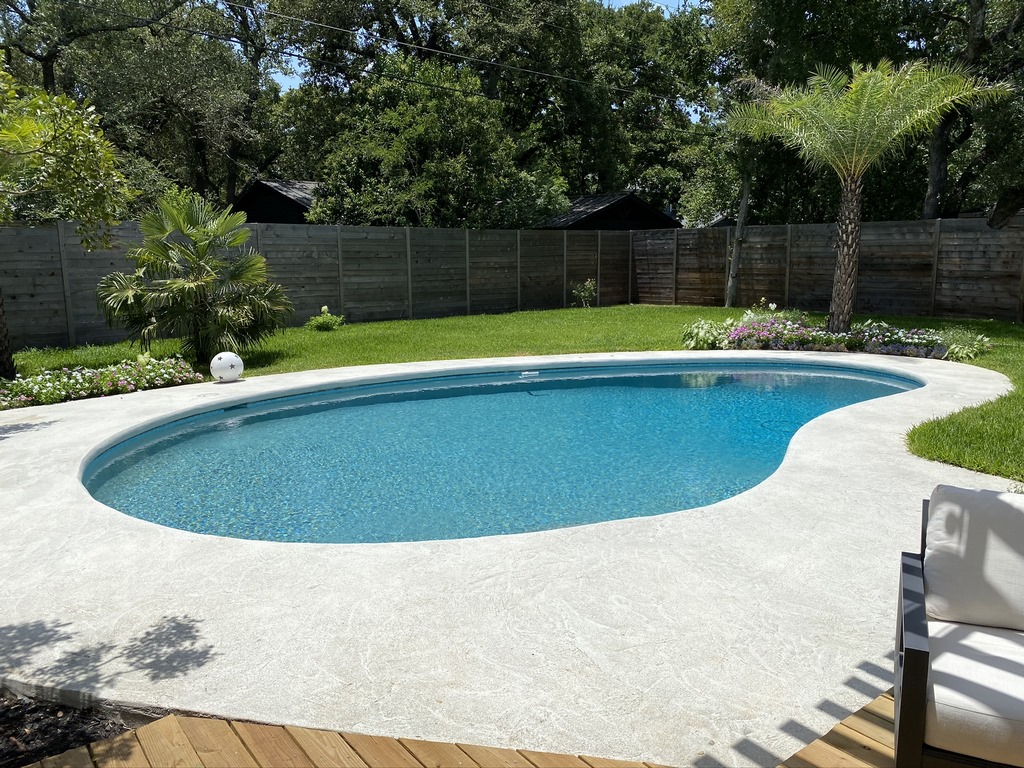
By Kris Anna Andersen & R Lee Steele
As real estate investors, we’re always on the lookout for something special and when we find it, we sometimes remodel houses and sell them. The property featured here falls firmly into that “something special” category. It’s a great house in a fantastic neighborhood in Austin, Tex. Like most homes we take on, it needed upgrading to bring out its full potential – and it had this really old kidney-shaped pool in the backyard.
Both of us love pools and like many people we have all sorts of memories of swimming in backyard pools. From an investment perspective, we believe they can be an asset when selling a home, especially in a climate as warm as this. Unfortunately, the experience of retrofitting this particular pool, and working with the dishonest and incompetent people we had the misfortune of hiring, it’s safe to say our feelings about some people in the pool industry (certainly not all) is less than favorable.
Here’s what happened:
SIMPLE ENOUGH
The pool was in bad shape, a true eyesore. It had an ugly fence around it with a big dog run and structure right next to it. It wasn’t well maintained and it hadn’t been renovated or touched up in any way. The plaster, tile and coping were shot, but we could see it had potential. Neither of us had any experience renovating pools, but we knew this one had to be remodeled. We most certainly did not fully understand what we were getting ourselves into with the pool.
At first, we thought it wouldn’t be a huge project; meaning we wouldn’t need a pool builder to do the work and that we could subcontract all the important facets of the remodel. Arguably, that was our first mistake.
We found a plastering company who claimed they would take on the entire project, which was simply to replace the plaster, tile and coping, and the equipment. It was our understanding that these types of remodels happen all the time with little difficulty. So, on we went.The first thing that happened was the plaster company said that they would take care of everything inside the pool, and would subcontract the equipment pad to another company. That sounded fine, and at first everything seemed in order.
One of our conditions was that the pool had to be chlorine free, or as close to it as we could get. We’re both allergic to chlorine and have bad reactions after we swim in it. We did a lot of research online about alternative sanitization systems and fell into a marking trap from one particular manufacturer that seemed to fit everything we were looking for. The equipment subcontractor had several customers that had this particular device installed on their pools so we felt like we could move forward.Jumping ahead just a bit, the sanitation device never worked, at all.
We would go so far to say it’s a complete sham, based on our experience. After all kinds of discussions and arguments, we wound up having it removed and, after threatening a lawsuit, we recouped the cost of the system.
That said, it did sound great, at first, and we were thrilled with the idea of eliminating chlorine. The company we were working with explained that in order to make this technology work, we had to turn the pool volume over four times every day. The problem was, the existing plumbing would only enable us to turn it over twice a day because the pipes were only 1 -inch in diameter. That meant we needed to increase the size the suction and return lines.
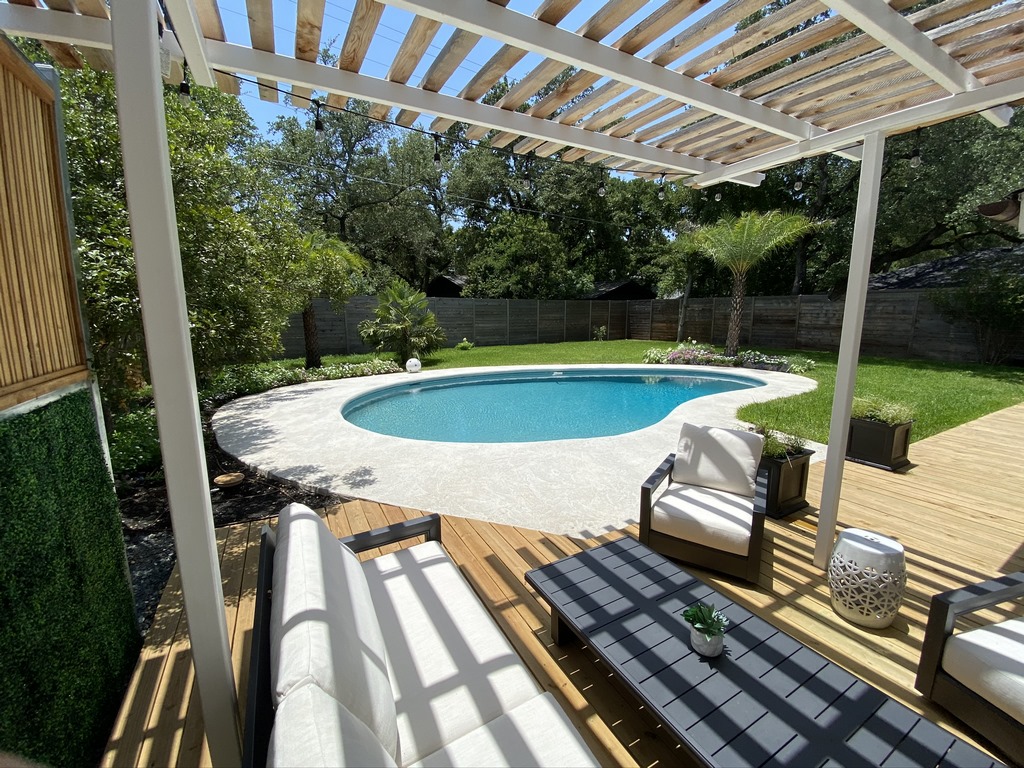
In effect, we had one company that was working on the equipment pad, which had specific requirements for plumbing size to achieve required flow rates, and on the other, the plastering company, which completely ignored those issues, and in fact, was entirely vague about what would be done to the plumbing inside the pool itself.
No matter how hard we tried to get everyone on the same page, the people we were working with — who supposedly work with each other all the time — absolutely refused to connect the hydraulic dots between the equipment and the pool.There was also a plumber involved, also subbed from the plastering company, but he had a problem with the guy that was working on the equipment. They couldn’t agree on the plumbing requirements or even how much room we’d need on the equipment pad.
The upshot was that the plumber started doing a bunch of work, which we were later discovered was all wrong. There were a variety of issues, one of which was the existing pool didn’t have a main drain. As it turns out, when the Virginia Graeme Baker Act was passed, there was a local company that went around scaring consumers about the dangers of main drains and instead of bringing them into compliance with VGB, they simply covered them up. This pool was one of those.
That led to the question of whether or not we needed a main drain at all; and, we did learn that there are arguments both for and against. Because the pool has a deep end — and we were told that drains do help keep the bottom clean — we decided that when the pool’s existing plaster was chipped out, we’d look to see if a drain was there. In fact, there was an existing drain just below the plaster, but it had a butyl line running to it, meaning we’d have to install new plumbing to the drain.
CONFLICTING MESSAGES
At one point, the president of the plastering company said that if we had to choose between putting in a main drain line or a new skimmer, we should put in a main drain. He explained that we’d never have the circulation we needed without a drain and that the pool floor would never be clean either. This advice was in direct conflict with what the equipment guy said, who said we needed another skimmer.
We accepted that and decided to go with the main drain, but we immediately ran into trouble with the plumber. Hetold us that he should put in 1 -inch pipe and cover it up, and we would never know the difference. Later when we arrived to find much of the pool plumbing covered up we had our doubts. We discovered that he had actually blowtorched the pipe, charred it. and also bent it so that it was less than 1 -inch in diameter. We eventually determined that all of this plumber’s work had to be removed and replaced.
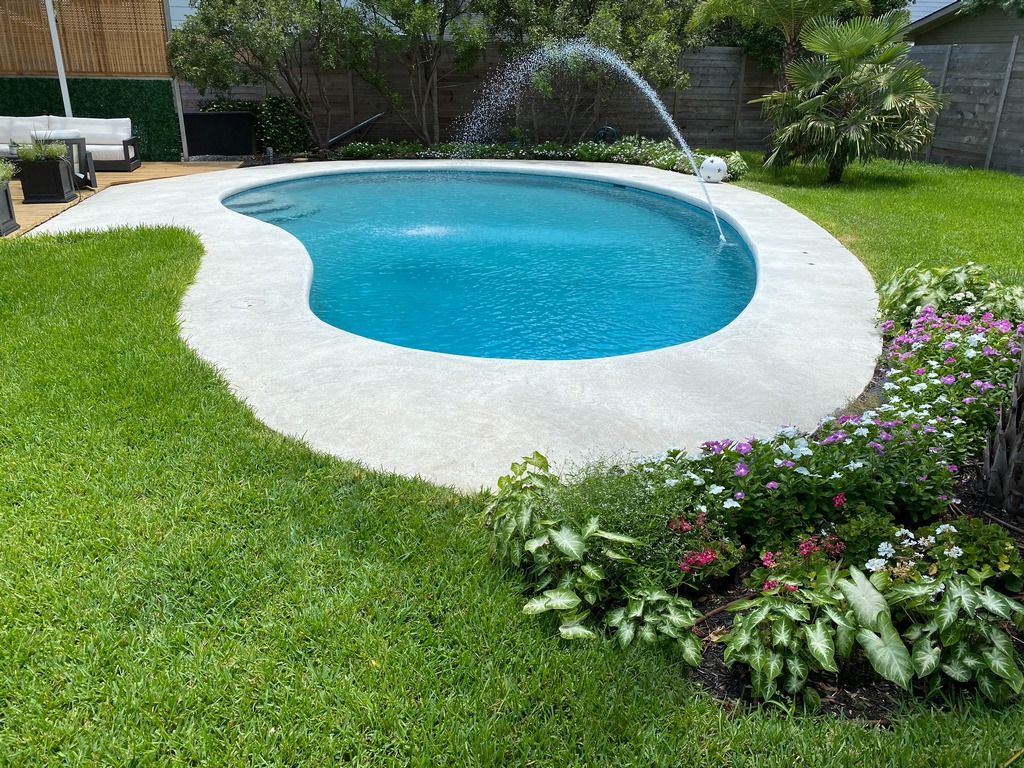 On top of all that, the equipment guy tried to convince us that although the smaller pipe wouldn’t turn it over four times per day, it would “mix the water better in the pool.”
On top of all that, the equipment guy tried to convince us that although the smaller pipe wouldn’t turn it over four times per day, it would “mix the water better in the pool.”
At that point, we knew we needed help to untangle this whole mess. So, we hired an engineer who had a great reputation and tremendous pool-industry experience. The only problem was that the engineering and plans wound up costing just about 50% of what was our original estimate for renovating the pool.
The plans were amazing with every aspect of the pool fully engineered and specified over pages and pages. And we were pleased that the engineer agreed that the small plumbing wasn’t right.
But then again, we ran into some serious bumps with the engineer, as well. He shared with us about various aspects of design of swimming pools and his vision of energy efficiency. He recommended having a main drain that could reverse the flow to enable the water to be heated from the bottom up like a spa. He told us the energy efficiency from heating bottom up was 67% more efficient than heating from the surface.
Specifically, the engineer insisted that we create a reverse flow system, so water is returned through the main drain when the heater is on, in order to increase heating efficiency, even though heating pools in Austin is not as great a priority as it is in colder climates.
CHILLING EFFECT
Admittedly, we threw the engineer a curveball by asking for some way to instead cool the water, given the high temps during the summer, which can raise pool water to bath water temps. We did our research looking at reverse heat pumps and various chiller systems. We decided to go with a chiller system developed by a company in Houston.
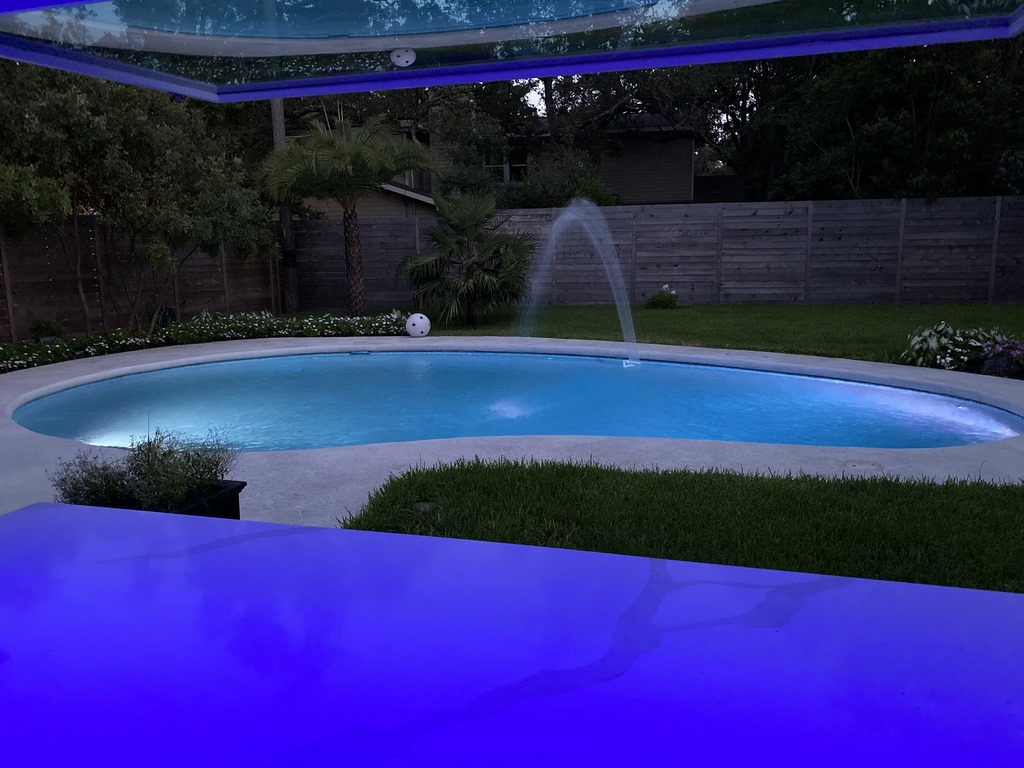
The equipment guy figured out a way to incorporate a chiller into the plumbing so when the pool went into chill mode the main drain became dedicated to the chiller and isolated from the suction side and return side of the plumbing. (Per the chiller manufacturer, the most ideal way is to pump cold water into the bottom of the pool located 18-inches from the main drain. There are other ways to connect, but this is the best way, they said.)
Also, we could not get the plastering company to agree to follow the plans and it worsened to the point that we did not trust their work; so, we fired them and hired a different company. The pool pad sub was completely independent of all this; but, unfortunately, we had a lot of problems with that sub as well not following the plans and eventually, after an electrical debacle with our pool light, we had to fire him too.
Everything was so confused and full of conflict, we decided to have a third-party inspector to verify everyone’s work. We found a pool-leak detection company with many years of experience. We met the owner, who looked at our plans and the pool, and gave us a bid for the cost of being our inspector.
We also hired a licensed electrician to do the electric work who turned out to be extremely helpful. That was probably the smartest thing we did on our journey
ONGOING WOES
Later on, we also ran into a bunch of problems with the start-up. Again, we were hearing all sorts of conflicting information and it was very obvious that information from industry organizations is extremely political and, frankly, unreliable. We wound up firing the start-up guy and did it ourselves, using Orenda’s system, which made sense to us and they provided excellent support. We’ve used their chemical products ever since.
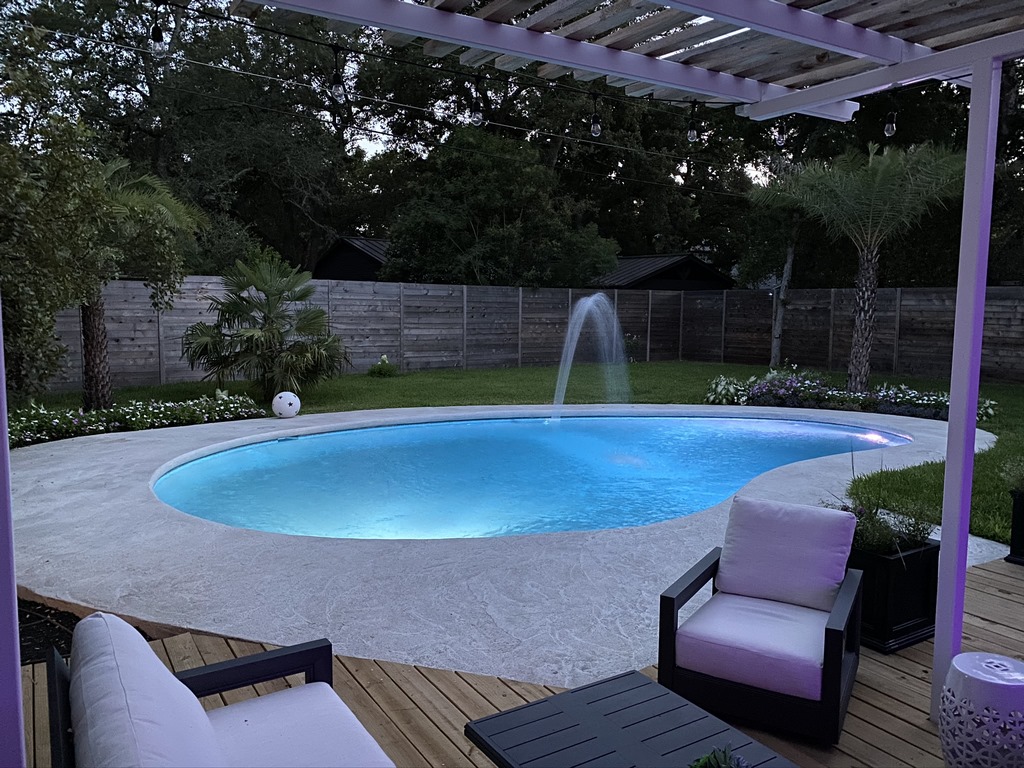
As it was, the system we had was so sophisticated that the manufacturer of the control system, which is practically a household name in the industry, wouldn’t even help us set up the controller, it was all so confusing. We finally found a local dealer who could help us, but we would go weeks waiting for him to return our calls. We ended up programming it ourselves because the manufacturer came out and programmed everything wrong.
Maybe we simply ran into the wrong people, although we certainly did our homework trying to seek out those with strong reputations. Based purely on what we’ve been through, it’s not surprising the industry suffers from a decidedly bad reputation. We also discovered that there is a lot more to aquatic systems than we could have possibly imagined.
Still in spite of all this that has gone on, we do love our pool. We did meet some fantastic people who counterbalanced the negativity we ran into, and now when we take a dip or just look out at our pool, we are very proud of it, and the journey we took to get there, even it if was, at times, an exercise in frustration.
Kris Anna Andersen has worked as a psychotherapist since 2004 and is a self-taught designer and color consultant in Austin, Texas. She is also a real-estate investor who enjoys transforming tired, dated houses into beautiful, cheerful homes.R Lee Steele is a realtor in Austin, Texas. He enjoys working with a diverse range of clients and specializes in investors who remodel homes. He has a highly technical aptitude that allows him to quickly learn complex systems. He is an electronic composer and has a background in studio recording, mixing, mastering and high-end audio/video.









